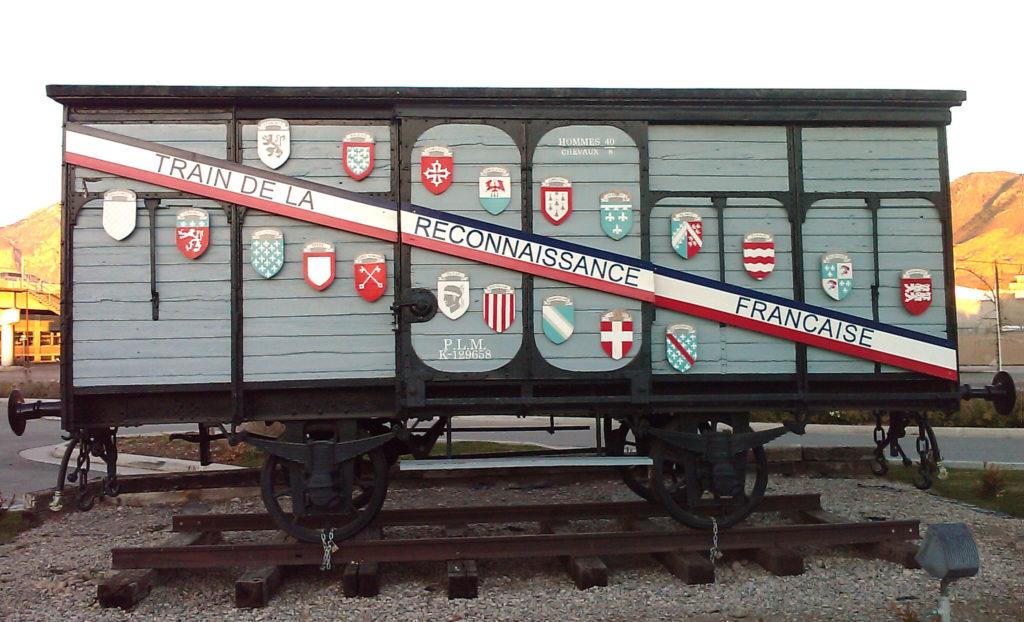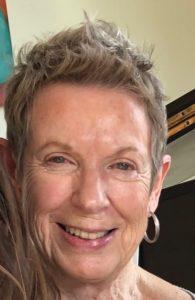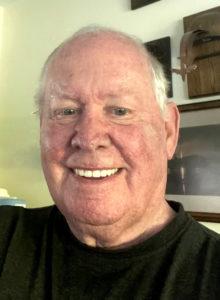Presentation of September 21, via Zoom
Our presenter Brigitte Helzer (née Kibler) was born in Alsace in 1941, while it was under Nazi occupation. During Brigitte’s young childhood, the Nazifying overlords tried to change Alsatians into German citizens, and they allowed only German, rather than French, to be spoken or taught in schools. Her parents gave her a name that could pass for both French and German. As a girl, she remembers hearing remotely about D-Day, she explained, and several months later American tanks entered her town, to general jubilation.
A few years later Helzer’s family would emigrate to the United States. After the end of World War II, Europeans were reeling from the war. The economic situation in much of the continent was dire, and reports of social misery reached the United States.
In 1947 the noted American journalist Drew Pearson, over his radio broadcasts, proposed the idea of creating a “Friendship Train” to provide food and supplies to the peoples of France and Italy. He urged Americans to donate humanitarian aid to help hungry Europeans rebuild their countries. Other journalists and prominent figures picked up his appeal. The result was an outpouring of aid, as American families, schools, churches, businesses, scout troops, and diverse organizations stepped forward to make generous contributions.
On November 1, 1947, a train made up of boxcars loaded with food, clothing, and medicine departed from Los Angeles and headed east. Along the way it picked up more railroad cars of goods. Texas alone donated twenty-nine. By the time the train reached New York, it was more than seven hundred boxcars long, all stuffed with donations. The boxcars were shipped to France and arrived on December 14, 1947.
The French people were so grateful that to reciprocate, they organized a campaign of their own: the people of France would express their gratitude by sending gifts to the people of America. The organizing committee decided that each of the U.S. states should get a boxcar of gifts.
Just as Americans from all strata had contributed to the Friendship Train, French people from all strata contributed to the Merci Train: orphan homes, schools, chambers of commerce, veterans organizations, rotary clubs, and the Legion of Honor all participated. Artifacts and souvenirs and mementos poured into Gare d’Orsay in Paris. French people donated magnificent works of art, crafts, objects of folklore, glassworks, needlework, mannequins decked out in fashionable clothing from all historical periods. Children wrote letters thanking the Americans. Many gifts turned down at the last minute because there was no more room in the boxcars.

The gifts were packed into boxcars and shipped to the United States at the end of 1948. There were 49 boxcars, each to go to a different U.S. state. Each boxcar was decked out in the coats of arms of all the provinces of France.
Just as the boxcars were leaving, Brigitte’s family was preparing to leave France. Her transatlantic journey almost coincided with the journey of the Merci boxcars. She has strong memories of the entire episode, especially the huge parade in New York to receive the boxcars.
The boxcars were transported to their respective states, on American flatcars. The one in Vermont is currently housed in the Vermont National Guard Library and Museum in Colchester. Richard Lorenz, president of the museum, noted that while other states’ boxcars are out in the elements, Vermont’s boxcar is well preserved, standing in a building that was constructed to house it.
What became of the gifts? It turned out that once the they arrived in the states, no one was sure what to do with them. Legislators took some of them to their towns, and some were given to high school French classes to be awarded as prizes. But as Helzer emphasized, it’s a big mystery as to where they all went.
in fact, twenty of the Vermont boxes remain. The were opened and sorted through, but items left over after distribution were placed in these boxes. You can see them on the Vermont Historical Society website here.
Watch the presentation by Brigitte Helzer and Richard Lorenz here:

